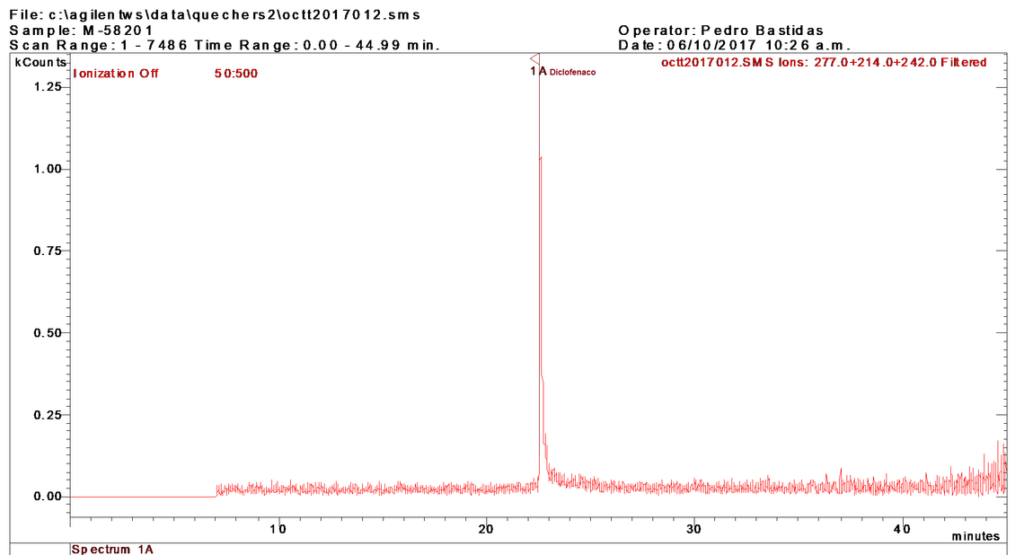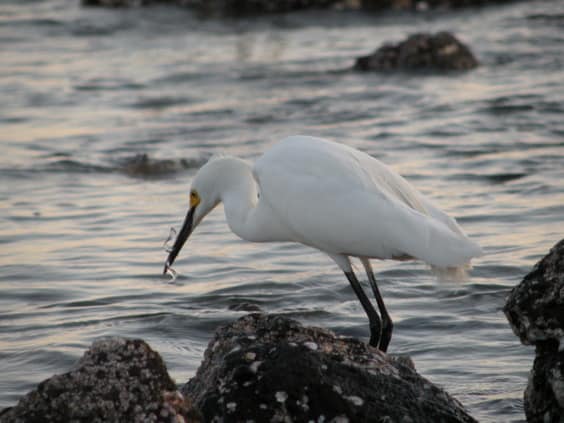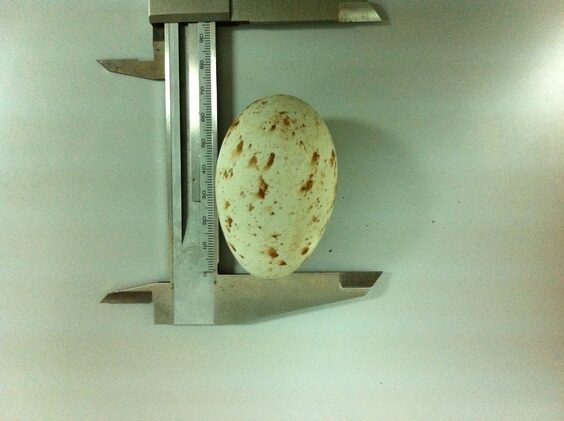
A flock of Roseate Spoonbills in flight (photo by Germán Leyva).
By Daniela Aguilera-Márquez, Pedro Bastidas-Bastidas, German Leyva-García, and Jaqueline García-Hernández, Centro de Investigación en Alimentación y Desarrollo
Pharmaceuticals of human and veterinary use are emerging contaminants with increasing production volumes each year (> 1000 ton/year globally), close to the production of pesticides and other organic contaminants. Non-steroidal anti-inflammatory drugs as well as their metabolites are a group of compounds widely used in human and veterinary health care, and often make their way into aquatic ecosystems. Diclofenac (DCF) is part of this group and is used for the symptomatic control of swelling, pain, and fever in humans as well as commonly used to treat domestic livestock. Residues of DCF can enter the environment through different pathways: emissions during production, discard of outdated or unutilized pharmaceuticals, human and animal feces and urine, direct discharge from aquaculture farms and manure dispersion.
Studies published starting in the 2000’s found that DCF is the most common pharmaceutical detected in the environment, derived from its common use in human veterinary medicine since the 1970’s, and more recently, due to the increasing number of floods in coastal regions derived from global climate change. The occurrence of DCF in seawater ranged between 0.021 ng/L and 10.2 μg/L, in the case of sediments it was detected within the range from 57.2 ng/g to 309 ng/g, there is a pattern of low concentrations of diclofenac in benthic species (33 ng/g), followed by mid-level concentrations in mussels (4.5 ng/g) and finally significant concentrations in fish plasma (11.9 μg/L). In this work, we present preliminary results showing detectable concentrations of DCF in eggs of two species of wading birds from Mexico.
Samples were collected at the Tóbari lagoon, in the south of Sonora, Mexico during the spring of 2011. This is a highly impacted area where approximately 10 agricultural and urban runoffs discharge into the bay, causing siltation and bioaccumulation of metals and organic contaminants. A sample of two Roseate Spoonbill (Platalea ajaja) eggs (one per each nest) and 1 Snowy Egret (Egretta thula) egg, were collected by hand from nests located inside the mangrove forest. Sample preparation and extraction was performed at the Research Center for Food and Development (CIAD) campus Guaymas, and chromatographic analyses were performed at the Pesticide Laboratory of CIAD campus Culiacan.
A peak was detected in all egg samples at a retention time (RT) of 22.6 min, however the spectrum of this peak was not recognized as a pesticide. To identify this compound, the spectral NIST library was used, and a match was found (No. 832) to diclofenac, where 100% of the unknown sample spectrum matched the DCF pattern. This retention time and spectrum pattern was confirmed with the pharmaceutical product, Dolo-neurobion forte MERK®.

Gas chromatography-mass spectrometry (GC-MS) chromatogram of Roseate Spoonbill egg sample showing diclofenac detection (Graphic courtesy of Pedro Bastidas-Bastidas).
The three egg extract samples were analyzed, and DCF was detected and quantified in 2 of the egg samples. The third sample presented only traces so quantification was not possible. Estimated DCF concentrations were 8.2612 µg/g wet wt. in one of the Roseate Spoonbill egg samples, and 6.7684 µg/g wet wt. in the Snowy Egret egg sample. DCF presence in superficial waters and sewage is well documented and varies between ng/L to a few ug/L. However, there are very few studies on residues in other environmental compartments such as groundwater, seawater, soil, sediment, sludge, and biota. DCF concentrations reported in coastal marine environments vary from a few ng/L up to 100 ng/L with higher values in estuaries and next to sewage discharges.
DCF has been included in the previous Watch List of EU Decision 2015/495 with the objective to gather information on their presence and environmental effects. This compound has shown toxicity in aquatic organisms at environmental relevant concentrations (ng/L), which represents a risk for aquatic species through biomagnification of the food chain. Results indicate that is likely that: 1) DCF is widely distributed on coastal ecosystems impacted by human activities, 2) DCF can accumulate in the food chain, reaching elevated concentrations on aquatic birds that feed on fish and small invertebrates, and 3) concentrations can be transferred to bird embryos through their eggs. More research is needed to determine impacts of contaminants on developing embryos as well as bioaccumulation impacts on the heath of adult birds.
This work was supported by the National Commission on Natural Protected Areas (CONANP) PROCODES program 2011 in Huivulai Island, Tóbari Bay, Sonora, Mexico.


 English
English  Español
Español 
